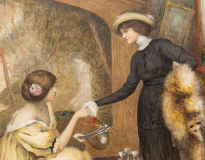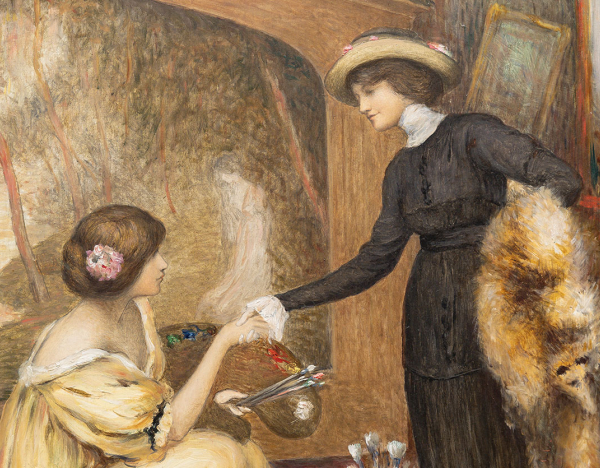Louis Marie Ridel
( 1866-1937 )
Biography
A French Symbolist painter, Louis Marie Joseph Ridel was born in Vannes in 1866. Trained in Paris, he studied under Gustave Moreau, Alfred de Richemont, and Élie Delaunay, mentors who profoundly shaped his spiritual and poetic conception of painting.
Close to artists such as Edmond Aman-Jean, Edgar Maxence, and Albert Besnard, Ridel fully embraced the ideals of the French Symbolist movement, seeking to convey, beyond appearances, the inner beauty and ideal essence of the visible world.
He devoted himself primarily to portraits of women, imbued with grace and mystery, as well as to views of Brittany, decorative panels, engravings, and medallions. His style combined the precision of drawing with a subtle and luminous palette, dominated by pearly harmonies and iridescent tones, reflecting an aesthetic approach akin to that of the Nabis and the Pont-Aven school.
Admitted to the Salon des Artistes Français in 1901, Ridel soon became a sociétaire. He also exhibited at the Salon des Tuileries and took part in numerous international exhibitions, including Berlin, Ghent, Cairo, Venice, Düsseldorf, Amsterdam, Tokyo, St. Louis, and Pittsburgh.
His talent was quickly recognized: in 1896, he received an honorable mention at the Salon des Artistes Français, followed by a third-class medal in 1898 and a second-class medal in 1900. In 1909, his artistic achievements were formally acknowledged when he was appointed Chevalier of the Legion of Honour.
During his lifetime, Ridel was awarded numerous official commissions for monumental decorations, including muralsfor the French Senate, the Ministry of Public Works, and the Town Hall of Paris’s 12th arrondissement.
The artist died in Paris in 1937, at the age of seventy-one.
93400 Saint-Ouen sur Seine

